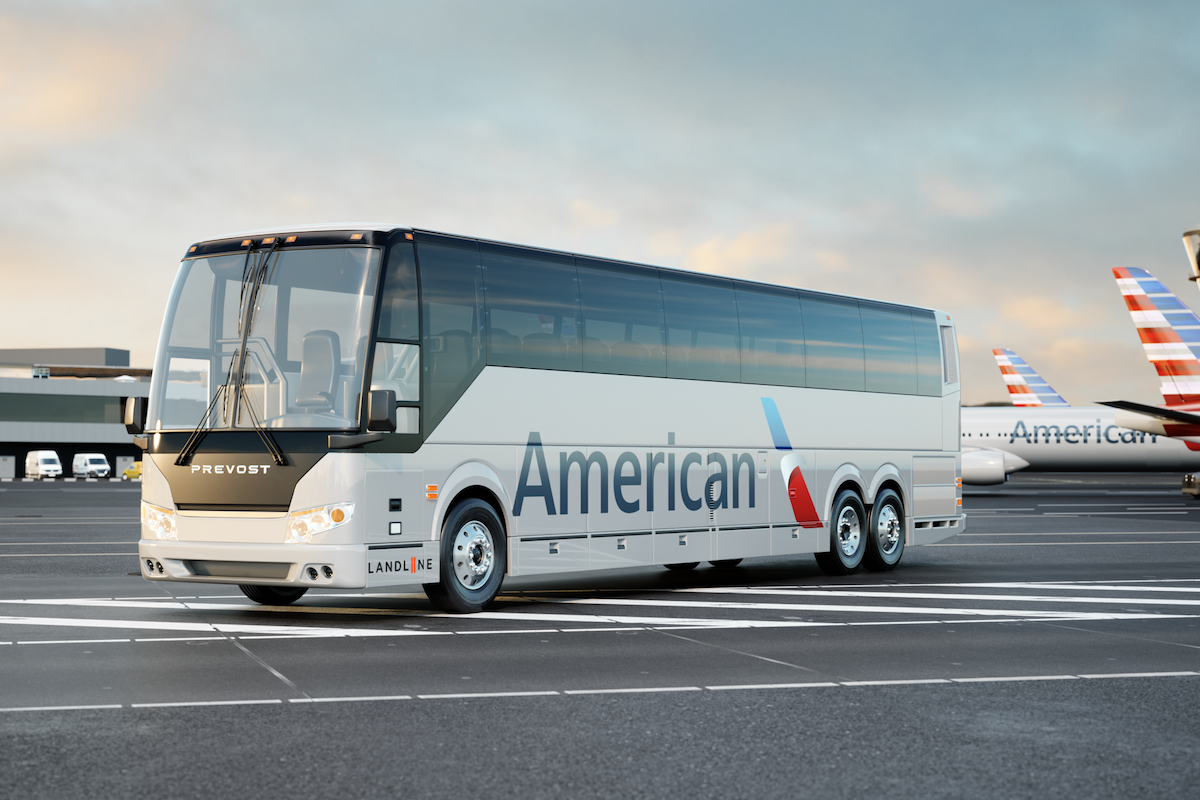American Airlines Restarts Philadelphia Regional Routes With Landline Buses

Photo Credit: American Airlines has contracted Landline to expand connections at its Philadelphia hub. Landline
American Airlines is the latest carrier to contract Landline for connecting "flights" operated with buses. The move comes as U.S. airlines face the concurrent challenges from a pilot shortage primarily hitting regional operators and elevated fuel prices that together have forced many airlines to fly less than they would prefer.
Landline will connect American's Philadelphia hub to Lehigh Valley airport near Allentown, Pa., and the airport in Atlantic City, N.J., beginning June 3. The destinations are 70 miles and 56 miles, respectively, distant from the Philadelphia airport, according to Google Maps. And while Atlantic City is a new addition to the Fort Worth, Texas-based carrier's map, it serves Allentown — with planes — from several of its other hubs, and flew Philadelphia-Allentown until suspending the route early in the pandemic, in May 2020.
The partnership is similar to ones Landline has with Sun Country Airlines in Minneapolis-St. Paul and United Airlines in Denver. Buses will be painted in an American livery, tickets will sold exclusively by the airline as its own "flights," and bags will be transferred between buses and planes as with any connecting flight. But the new American pact takes the tie up one step further: pending approvals, travelers will clear security in Allentown and Atlantic City and arrive airside at a yet-to-be-determined gate in Philadelphia.
American Vice President of Network Planning Brian Znotins in a statement described the partnership as "one more way" for travelers to connect to the airline's flights in Philadelphia.
At a high level, that's what Landline does: It gives airlines an another tool to expand their networks to destinations near their hubs. Buses make some routes economically feasible that are not with a plane. For example, American predecessor US Airways served Atlantic City nonstop from Philadelphia on and off until 2003. The route is unlikely to be considered today with the poor fuel economics of 50-seat regional jets — the smallest in American's regional fleet — and proximity of the city to Philadelphia.
The flight-on-a-bus business model also recognizes the fact of the U.S. transport system, that roads — and buses — are much more prevalent than trains. Airlines like American and United do not have the inter-city rail option in Philadelphia or Denver to connect airports to nearby communities that Air France and Lufthansa have in Paris and Frankfurt. Philadelphia does have a rail connection to Atlantic City, though not via its airport.
If there is anywhere a bus-to-flight connection could work in the U.S., its Lehigh Valley. The airport boasts the longest continually running bus-as-flight connection in the U.S. — a United service to its Newark hub. Darren Betters, director of business development at the Lehigh-Northampton Airport Authority that operates the Lehigh Valley airport, described the connection as "pretty successful." He added that most local travelers prefer to park there and take the bus, then make the 78-mile drive to Newark.
“We started all of this," he said. "It works. [Buses] provide connectivity where it would be tough to provide it by air.”
But Landline's proposition goes beyond being just a cheap way for an airline to expand its map: The company allows carriers to expand, or maintain, regional feed at a time when pilots are scarce in the U.S. American has suspended dozens of routes flown by regional affiliates across its network this spring and summer due to the shortage. And Chris Poinsatte, chief financial officer of Dallas-Fort Worth International Airport — where Cirium data show American operates nearly 87 percent of departures — warned investors in March that it anticipates a nearly 2 percent drop in flight operations in 2023 owing to the shortage at American's partners.
Other advantages of buses include significant fuel savings over aircraft, and lower carbon emissions. “If you’re flying less than 200 miles into your hub, a multi-modal connection is really efficient," Landline CEO and Co-Founder David Sunde said. He added that buses can "reduce the carbon emission of a regional flight by 80 or 90 percent today.”
Sunde has long touted the potential of Landline as a cost-effective way to connect smaller communities to major airports since its debut in 2019. The pandemic put a pause on Landline's expansion but, with the constraints that have emerged in the recovery, Sunde said discussions with potential new partners have picked up.
One confirmation of Landline's strategy is the closure of $28 million in new investment led by venture capital firm Drive Capital. The funding — which is nearly three times Landline's initial fundraising — brings its total invested capital to $38 million.
"You don’t put this kind of capital on a balance sheet if you’re not planning significant growth," Sunde said. He declined to comment on any additional growth beyond the new American deal.
Buses are an old solution to the last-mile problem. Multiple airlines have used them for ground connections in the past. British European Airways, a forerunner to British Airways, used buses to connect travelers between Heathrow Airport and a terminal in west London where they could check-in and drop bags in the 1960s and 1970s. In the U.S., America West Airlines offered bus connections — dubbed the "Careliner" — between Phoenix Sky Harbor airport and the nearby suburb of Scottsdale, Ariz., in the 1980s and '90s.
